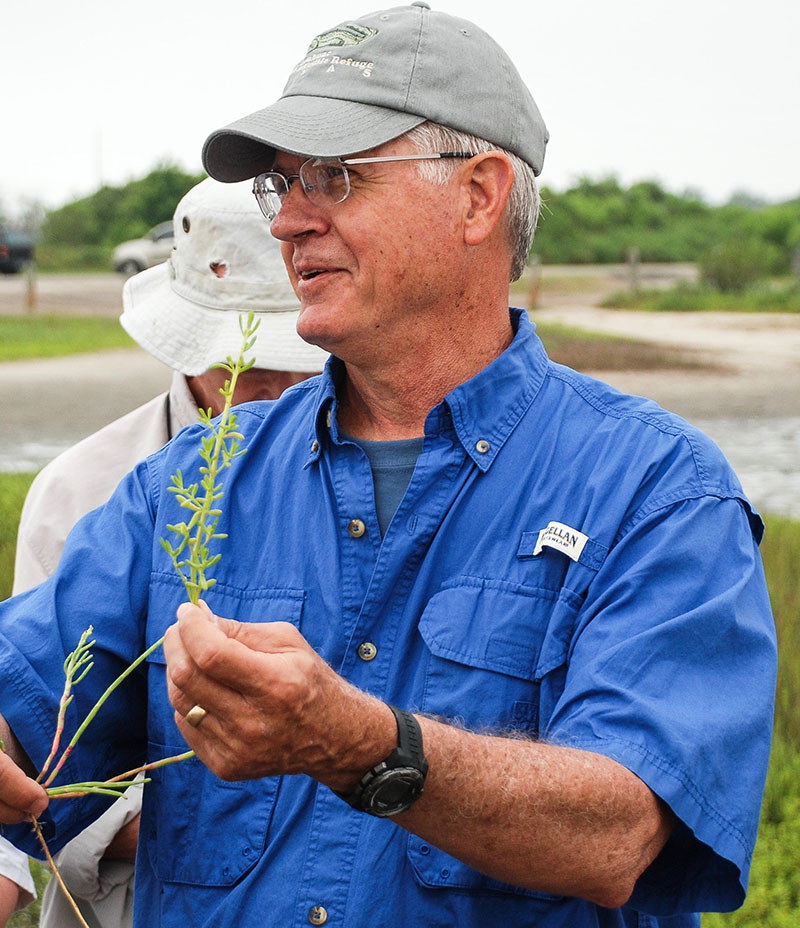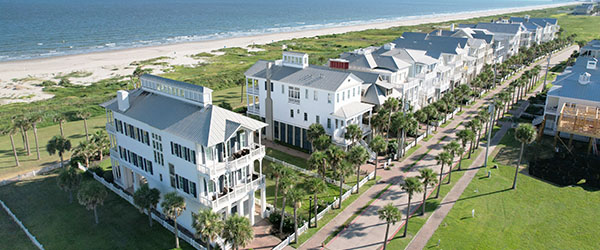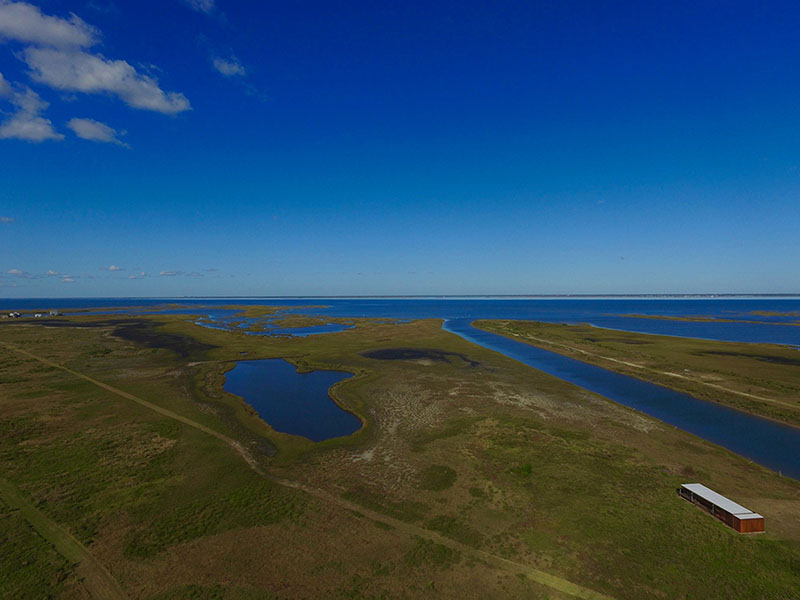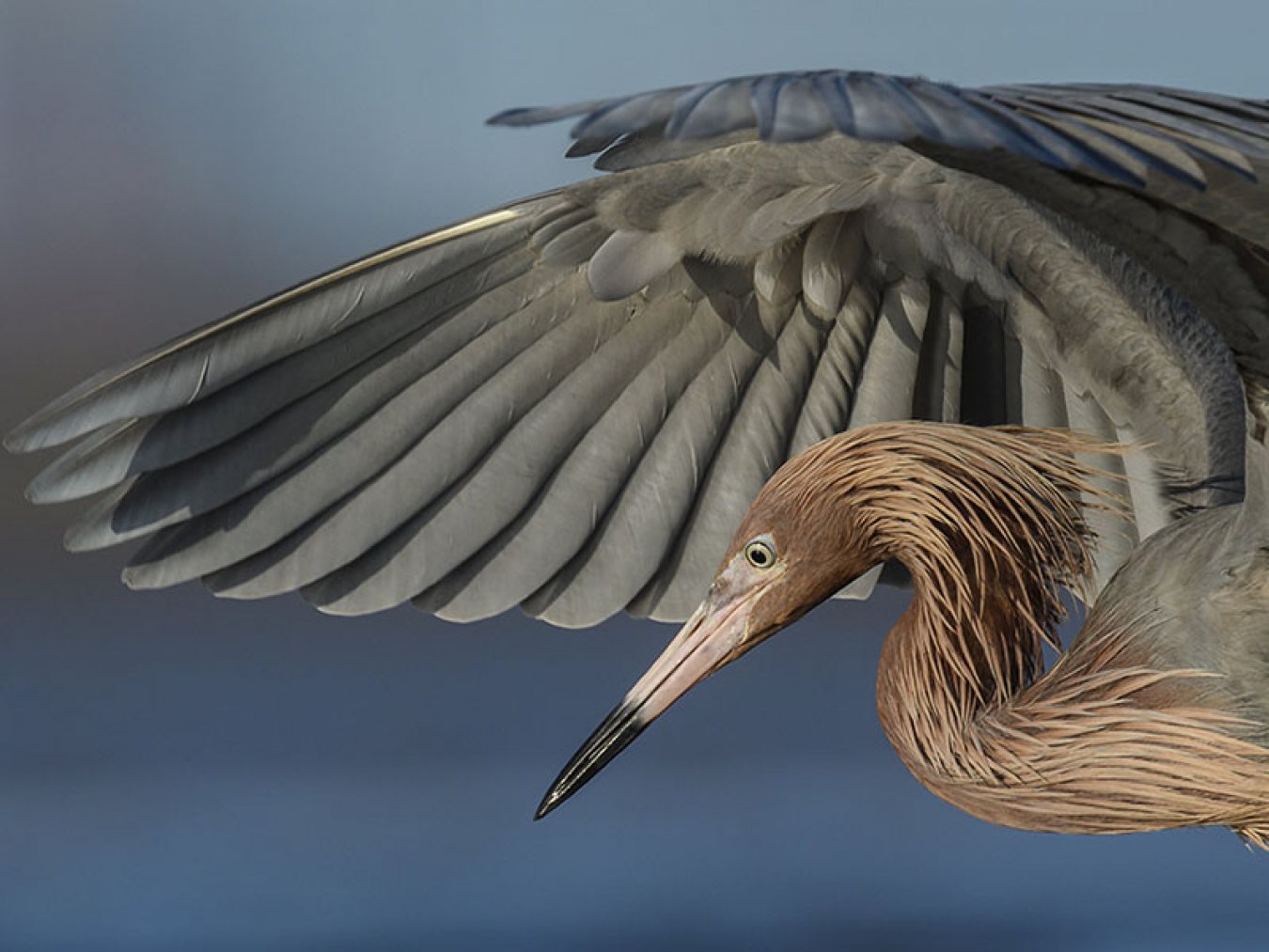Brown Pelicans: Galveston's Winged Ambassadors
Brown pelicans are a familiar sight in Galveston, frequently seen along the beachfront, ship channel and causeway. They are big birds. Yet they are marvelous flyers, gliding between flaps of wings that stretch seven feet across.
Their flight is occasionally interrupted when spotting fish below. It’s then they tuck those wide wings and dive headfirst into the water. If unsuccessful in their quest for fish, they quickly gather themselves and fly away, but if successful, they take a moment to properly position the fish in their pouch, then tilt their head backward to swallow their catch head first.
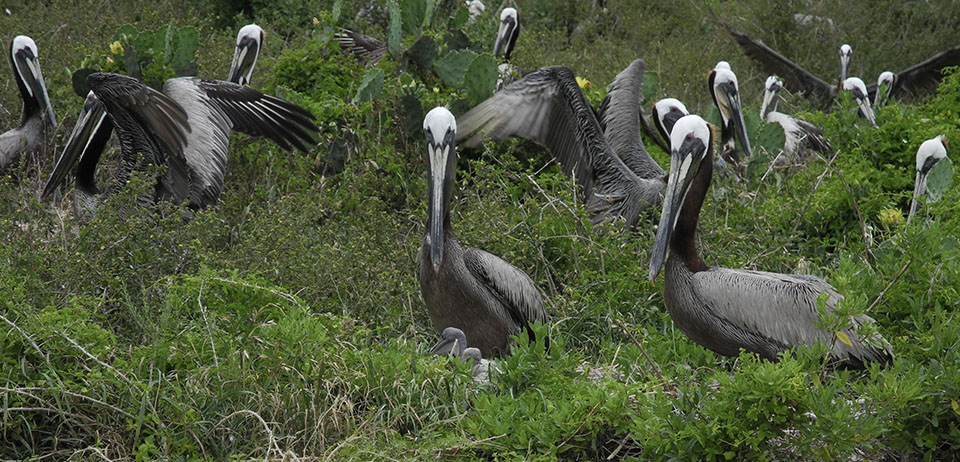
| Nesting Brown Pelicans | Steve Alexander |
Their familiarity today indicates a healthy population. But this hasn’t always been the case. In the 1960s, sightings of brown pelicans were rare. Populations were extremely low due to the harmful effects of the pesticide DDT. (For an explanation of how DDT affected brown pelican populations, see “Brown pelicans make a big comeback” in Exploring Galveston: A Naturalist’s Guide to the Island.) After learning of these harmful effects, DDT was banned.
But banning DDT was only part of the success story. Two other developments were important: the listing of the brown pelican as an endangered species by the Environmental Protection Agency in 1972, a move that gave brown pelicans special protection; and providing habitats suitable for breeding and raising offspring.
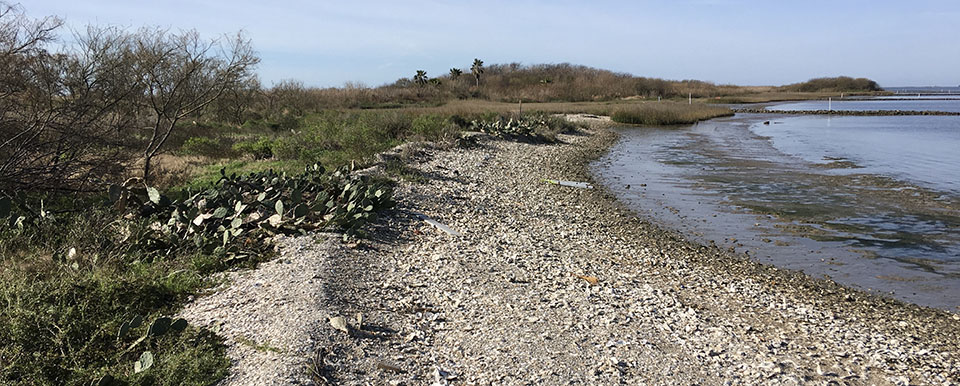
| North Deer Island | Steve Alexander |
Locally, one such habitat is North Deer Island in Galveston Bay (see photo). This 144-acre island has played a significant role in the recovery of local populations. You can see it from the top of the causeway when leaving Galveston. Just look to the left for the several-humped island with what appears to be a long tail.
North Deer Island is the perfect place for adult pelicans to build a nest and raise their young (see photos). It’s natural and uninhabited, with varying elevations capable of supporting a wide array of vegetation suitable for nesting. It has been further improved with breakwaters and rock groins to prevent erosion. In this place, with a steady diet of parent-provided fish, thousands of chicks are reared each year, within months setting off on their own, joining others in flights around town.
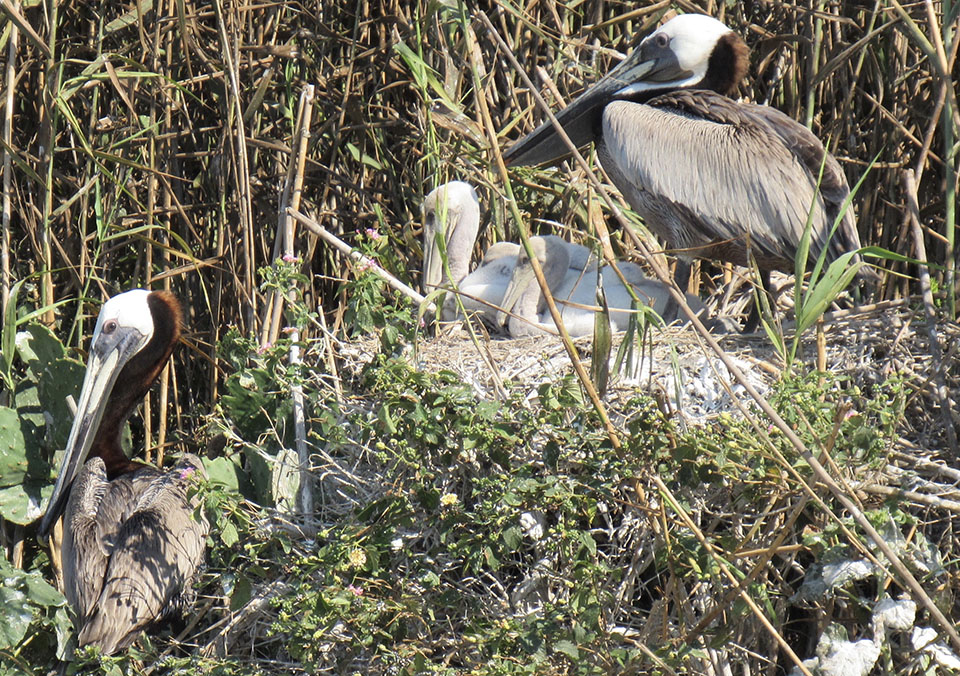
| Brown Pelican Chicks | Steve Alexander |
It’s important to note North Deer Island is an Audubon bird sanctuary, prohibiting human access during the breeding season from February to August. In fact, it is a violation of state and federal laws to disturb nesting birds (see photo).
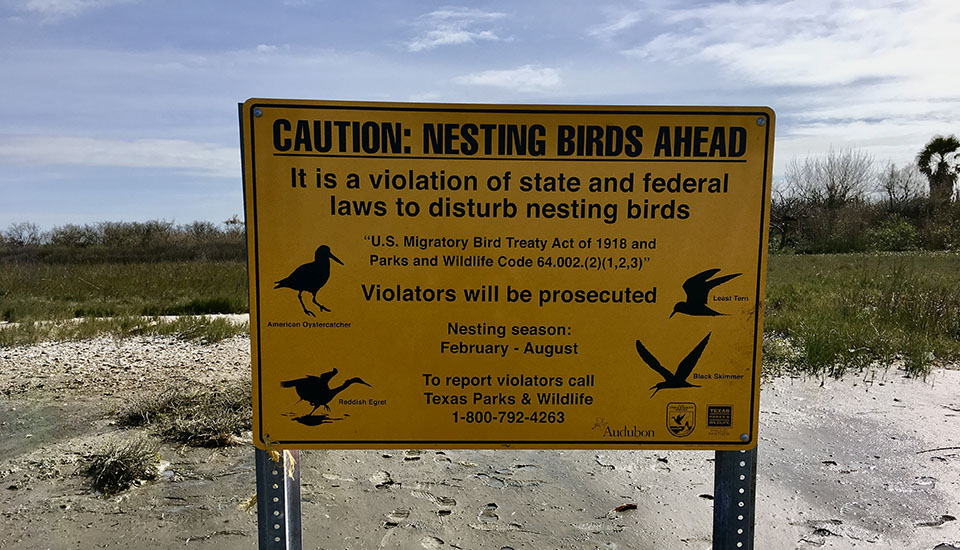
| Brown Pelican Chicks | Steve Alexander |
The recovery of the brown pelican population is a great achievement, one that demonstrates the ability of wildlife to restore themselves, but only if we provide them the necessary natural resources and proper protection.
Author’s note: Thanks to Audubon Texas staff, especially Kari Howard and Dennis Jones, for allowing participation in North Deer Island nesting surveys by boat, and to Gulf Coast Bird Observatory, especially Dr. Susan Heath, for allowing participation in oystercatcher nesting surveys by boat.
Luxury Vacation Rentals Available
Relax, Unwind, and Enjoy Luxury
Steve Alexander
Steve Alexander teaches wetlands management at Texas A&M University at Galveston and is a former member of the Board of Directors of the Galveston Island Nature Tourism Council. He is the author of Exploring Galveston: A Naturalist's Guide to the Island.